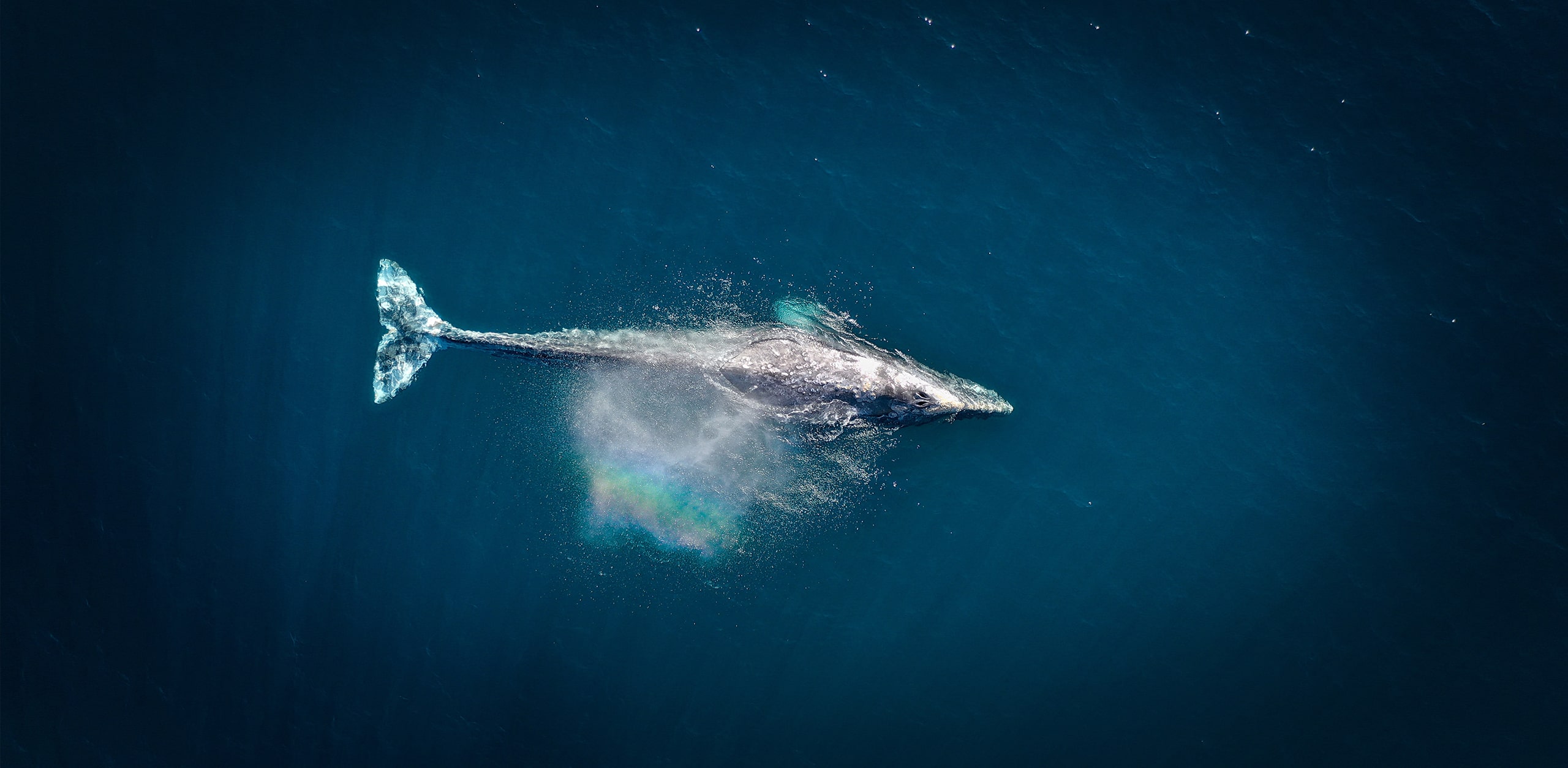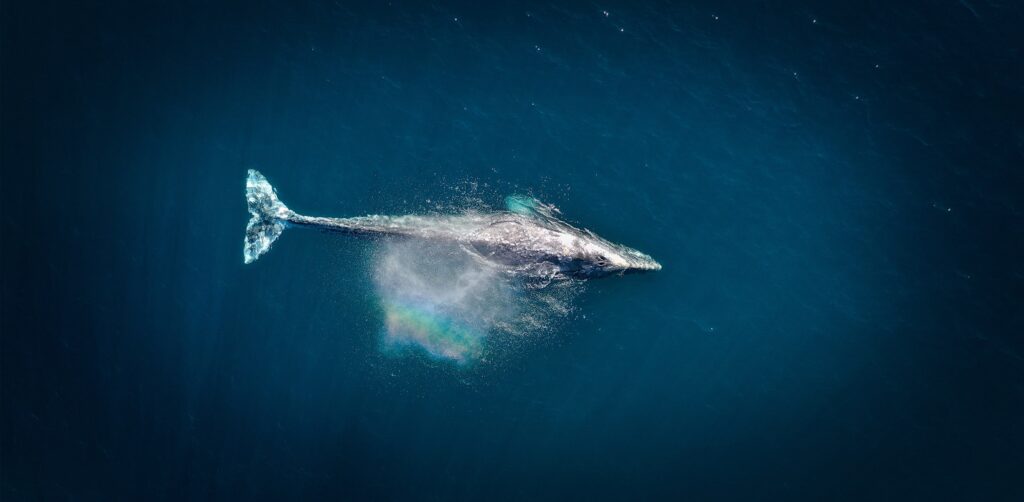
How desirable are efforts to understand animal communication using new technologies?


Under the influence of new technologies, efforts to understand animal communication are advancing rapidly. Innovations in machine learning and language processing play a central role in this. How desirable are these developments?
When it comes to technologies focused on nature and sustainability, there is a wide range of tools available. The motives behind the development and deployment of these technologies can vary greatly, as well as the implications they have and how they are experienced. Are we perceiving the same thing?
Take, for example, the rapidly increasing technological capabilities in the field of data collection and analysis, among others in the domain of biology, and the expectations surrounding them. Innovative imaging methods at both extremely small and large scales (such as microscopy images to satellite images) can provide us with more insights into ecological processes and interactions at micro and macro levels. Increasing computational and analytical capabilities make it possible to map genomes, protein structures and ecological cycles with greater processing power and speed. Artificial Intelligence (AI), including applications of machine learning and natural language processing, is being utilized to map and understand the communication of other species (Barkham, 2022; Earth Species Project, n.d.).
Behind the development and deployment of these technological innovations may be different intentions, ideals and interests. Ideas about the purpose of these innovations and their implications are not necessarily clear-cut, which complicates the discussion on their desirability. To illustrate, I will discuss an example of technology-driven biological research: the development of so-called interspecies translation initiatives. Over time, more cases will be explored as part of the futures research.
Interdisciplinary Technological Marvels
Under the influence of new technologies, efforts to understand animal communication are advancing rapidly. Innovations in machine learning and language processing play a central role in researching the communication of various species, including birds, amphibians, primates, elephants, and insects (Feingold, 2023).
One notable initiative is the Earth Species Project (ESP), founded in 2017 (Earth Species Project, n.d.), often referred to as the “Google Translate for whales” (Barkham, 2022). The mission of this organization is to decode non-human communication using artificial intelligence (Earth Species Project, n.d.). They search for patterns in large datasets of visual, vocal, and physical animal communication (Feingold, 2023). Their approach combines insights from diverse fields, including ethology, mathematics, neuroscience, linguistics, and artificial intelligence (Earth Species Project, n.d.). ESP’s research focuses on a wide range of animal species, from humpback whales to crows. The ESP team is inspired by recent developments in natural language processing, including the ability to translate between multiple languages using machine learning. Their intention is to create language models for individual species as well as for numerous species simultaneously (Schreiner, 2022).
Another “translation initiative” is the Cetacean Translation Initiative (CETI). CETI also brings together scientists from various disciplines, including marine robotics, whale biology, artificial intelligence, linguistics, cryptography, and data science. The initiative sets even higher goals, aiming to “learn how to communicate with a whale well enough to exchange ideas and experiences.” To achieve this, they employ a wide range of tools, including underwater listening stations, drones equipped with hydrophones, and robot fish swimming among the whales to collect audio and video materials (Barkham, 2022).
There are also several AI-facilitated translation attempts by existing institutions, such as an international research project led by the University of Copenhagen (UCPH), ETH Zurich, and INRAE (the French National Research Institute for Agriculture, Food, and the Environment). The project aims to translate different types of pig vocalizations into emotions. By utilizing 7414 audio recordings of pigs in various conditions, an algorithm has been developed that estimates whether a pig is experiencing a (more or less) positive or negative emotion (UCPH, 2022).
High Expectations
According to whale scientist Professor Joy Reidenberg, we are in a pivotal moment similar to when Antonie van Leeuwenhoek invented the modern microscope in the mid-17th century, laying the foundation for microbiology. Reidenberg sees this era as “the beginning of augmented biology,” where the limitations of human perception seem to diminish due to new technological developments. He is confident that these new technologies will open up new worlds for us: “Today, big data and machine learning could probe an impenetrable boundary – the chasm between our consciousness and those of other animals. Can we communicate with whales? If so, what will we say? And what will they say back?” (Joy Reidenberg, quoted in Barkham, 2022).
The aspirations of both translation initiatives are driven by high ideals and expectations. ESP aims to ensure that rapid technological advancements benefit humanity and the planet, contributing to nature conservation. Their approach is based on the belief that understanding non-human languages will transform our relationship with the rest of nature (Earth Species Project, n.d.). The implicit assumption is that this transformation will benefit humans, nature, and the planet. Katie Zacarian, co-founder and CEO of ESP, emphasizes the potential broader significance of inter-species language understanding. “With this progress, we anticipate that we are moving rapidly toward a world in which two-way communication with another species is likely” (Katie Zacarian, quoted in Feingold, 2023). She believes that unlocking insights into the communication of another species will have profound implications for reshaping how humans perceive their role and for exploring how we can coexist on the planet.
Similar ideals are expressed on CETI’s website: “By interpreting sperm whales’ voices and hopefully communicating back, CETI aims to show that today’s most cutting-edge technologies can be used to benefit not only humankind, but other species on this planet. By enabling humans to deeply understand and protect the life around us, we thereby redefine our very understanding of the word ‘we’.” CETI believes that its activities “have the potential to significantly reshape humanity’s understanding of its place on this planet” and that “we can collaborate with technologies to build a brighter, more connective and equitable future” (Project CETI, n.d.).
Practical expectations are also voiced. Elodie Briefer, Associate Professor in the Department of Biology at the University of Copenhagen, sees the algorithm that translates pig grunts as a significant step toward improving animal welfare in livestock and hopes that someone will use the algorithm to develop an app that farmers can use for welfare enhancement purposes (UCPH, 2022).
A general expectation is that learning to communicate with animals will lead to profound changes in interspecies relationships (Barkham, 2022). According to Tom Mustill, wildlife filmmaker and author of the book “How to Speak Whale,” power differentials and abuse are about “who controls the story, whose voice is heard and who is considered to have a voice” (Tom Mustill, quoted in Barkham, 2022). He believes that conversations with animals generate new human respect and possibly new consciousness (Barkham, 2022). Kay Firth-Butterfield, Head of AI and Machine Learning at the World Economic Forum, also refers to giving “a voice” to animals and sees understanding what animals are saying as a first step (Feingold, 2023).
Concerns and Doubts
At the same time, there are also concerns raised about the potential risks and undesirable applications of communicating with animals. Animals could be manipulated, with pigeons transmitting diseases to enemies and turtles being used to transport drugs (Barkham, 2022). On a more fundamental level, ethical questions are also being raised. Karen Bakker, a professor at the University of British Columbia and author of “The Sounds of Life: How Digital Technology is Bringing Us Closer to the Worlds of Animals and Plants,” argues, “We’re not quite sure what the effect will be on the animals and whether they even want to engage in some conversations […] Maybe if they could talk to us, they would tell us to go away.” (Karen Bakker, quoted in Feingold, 2023).
To what extent is the expectation grounded that gaining more insight into the communication of other species and the ability to even communicate with other species will lead to a more sustainable and just world? Will these potential new possibilities inevitably result in a shift in our thinking and experience, irreversibly changing our self-perception? Or is it naive to assume that these possibilities will undermine existing dominant practices, power relations, and beliefs? Or, to put it more strongly (and perhaps cynically), is it more realistic to assume that the new possibilities will be used in a way that reinforces existing patterns and serves existing habits, interests, and positions of power?
Literature
The original text is translated to English by Bertrand Burgers.
Under the influence of new technologies, efforts to understand animal communication are advancing rapidly. Innovations in machine learning and language processing play a central role in this. How desirable are these developments?
When it comes to technologies focused on nature and sustainability, there is a wide range of tools available. The motives behind the development and deployment of these technologies can vary greatly, as well as the implications they have and how they are experienced. Are we perceiving the same thing?
Take, for example, the rapidly increasing technological capabilities in the field of data collection and analysis, among others in the domain of biology, and the expectations surrounding them. Innovative imaging methods at both extremely small and large scales (such as microscopy images to satellite images) can provide us with more insights into ecological processes and interactions at micro and macro levels. Increasing computational and analytical capabilities make it possible to map genomes, protein structures and ecological cycles with greater processing power and speed. Artificial Intelligence (AI), including applications of machine learning and natural language processing, is being utilized to map and understand the communication of other species (Barkham, 2022; Earth Species Project, n.d.).
Behind the development and deployment of these technological innovations may be different intentions, ideals and interests. Ideas about the purpose of these innovations and their implications are not necessarily clear-cut, which complicates the discussion on their desirability. To illustrate, I will discuss an example of technology-driven biological research: the development of so-called interspecies translation initiatives. Over time, more cases will be explored as part of the futures research.
Interdisciplinary Technological Marvels
Under the influence of new technologies, efforts to understand animal communication are advancing rapidly. Innovations in machine learning and language processing play a central role in researching the communication of various species, including birds, amphibians, primates, elephants, and insects (Feingold, 2023).
One notable initiative is the Earth Species Project (ESP), founded in 2017 (Earth Species Project, n.d.), often referred to as the “Google Translate for whales” (Barkham, 2022). The mission of this organization is to decode non-human communication using artificial intelligence (Earth Species Project, n.d.). They search for patterns in large datasets of visual, vocal, and physical animal communication (Feingold, 2023). Their approach combines insights from diverse fields, including ethology, mathematics, neuroscience, linguistics, and artificial intelligence (Earth Species Project, n.d.). ESP’s research focuses on a wide range of animal species, from humpback whales to crows. The ESP team is inspired by recent developments in natural language processing, including the ability to translate between multiple languages using machine learning. Their intention is to create language models for individual species as well as for numerous species simultaneously (Schreiner, 2022).
Another “translation initiative” is the Cetacean Translation Initiative (CETI). CETI also brings together scientists from various disciplines, including marine robotics, whale biology, artificial intelligence, linguistics, cryptography, and data science. The initiative sets even higher goals, aiming to “learn how to communicate with a whale well enough to exchange ideas and experiences.” To achieve this, they employ a wide range of tools, including underwater listening stations, drones equipped with hydrophones, and robot fish swimming among the whales to collect audio and video materials (Barkham, 2022).
There are also several AI-facilitated translation attempts by existing institutions, such as an international research project led by the University of Copenhagen (UCPH), ETH Zurich, and INRAE (the French National Research Institute for Agriculture, Food, and the Environment). The project aims to translate different types of pig vocalizations into emotions. By utilizing 7414 audio recordings of pigs in various conditions, an algorithm has been developed that estimates whether a pig is experiencing a (more or less) positive or negative emotion (UCPH, 2022).
High Expectations
According to whale scientist Professor Joy Reidenberg, we are in a pivotal moment similar to when Antonie van Leeuwenhoek invented the modern microscope in the mid-17th century, laying the foundation for microbiology. Reidenberg sees this era as “the beginning of augmented biology,” where the limitations of human perception seem to diminish due to new technological developments. He is confident that these new technologies will open up new worlds for us: “Today, big data and machine learning could probe an impenetrable boundary – the chasm between our consciousness and those of other animals. Can we communicate with whales? If so, what will we say? And what will they say back?” (Joy Reidenberg, quoted in Barkham, 2022).
The aspirations of both translation initiatives are driven by high ideals and expectations. ESP aims to ensure that rapid technological advancements benefit humanity and the planet, contributing to nature conservation. Their approach is based on the belief that understanding non-human languages will transform our relationship with the rest of nature (Earth Species Project, n.d.). The implicit assumption is that this transformation will benefit humans, nature, and the planet. Katie Zacarian, co-founder and CEO of ESP, emphasizes the potential broader significance of inter-species language understanding. “With this progress, we anticipate that we are moving rapidly toward a world in which two-way communication with another species is likely” (Katie Zacarian, quoted in Feingold, 2023). She believes that unlocking insights into the communication of another species will have profound implications for reshaping how humans perceive their role and for exploring how we can coexist on the planet.
Similar ideals are expressed on CETI’s website: “By interpreting sperm whales’ voices and hopefully communicating back, CETI aims to show that today’s most cutting-edge technologies can be used to benefit not only humankind, but other species on this planet. By enabling humans to deeply understand and protect the life around us, we thereby redefine our very understanding of the word ‘we’.” CETI believes that its activities “have the potential to significantly reshape humanity’s understanding of its place on this planet” and that “we can collaborate with technologies to build a brighter, more connective and equitable future” (Project CETI, n.d.).
Practical expectations are also voiced. Elodie Briefer, Associate Professor in the Department of Biology at the University of Copenhagen, sees the algorithm that translates pig grunts as a significant step toward improving animal welfare in livestock and hopes that someone will use the algorithm to develop an app that farmers can use for welfare enhancement purposes (UCPH, 2022).
A general expectation is that learning to communicate with animals will lead to profound changes in interspecies relationships (Barkham, 2022). According to Tom Mustill, wildlife filmmaker and author of the book “How to Speak Whale,” power differentials and abuse are about “who controls the story, whose voice is heard and who is considered to have a voice” (Tom Mustill, quoted in Barkham, 2022). He believes that conversations with animals generate new human respect and possibly new consciousness (Barkham, 2022). Kay Firth-Butterfield, Head of AI and Machine Learning at the World Economic Forum, also refers to giving “a voice” to animals and sees understanding what animals are saying as a first step (Feingold, 2023).
Concerns and Doubts
At the same time, there are also concerns raised about the potential risks and undesirable applications of communicating with animals. Animals could be manipulated, with pigeons transmitting diseases to enemies and turtles being used to transport drugs (Barkham, 2022). On a more fundamental level, ethical questions are also being raised. Karen Bakker, a professor at the University of British Columbia and author of “The Sounds of Life: How Digital Technology is Bringing Us Closer to the Worlds of Animals and Plants,” argues, “We’re not quite sure what the effect will be on the animals and whether they even want to engage in some conversations […] Maybe if they could talk to us, they would tell us to go away.” (Karen Bakker, quoted in Feingold, 2023).
To what extent is the expectation grounded that gaining more insight into the communication of other species and the ability to even communicate with other species will lead to a more sustainable and just world? Will these potential new possibilities inevitably result in a shift in our thinking and experience, irreversibly changing our self-perception? Or is it naive to assume that these possibilities will undermine existing dominant practices, power relations, and beliefs? Or, to put it more strongly (and perhaps cynically), is it more realistic to assume that the new possibilities will be used in a way that reinforces existing patterns and serves existing habits, interests, and positions of power?
Literature
The original text is translated to English by Bertrand Burgers.
© 2024 Symbiose All Rights Reserved.
© 2024 Symbiose All Rights Reserved.